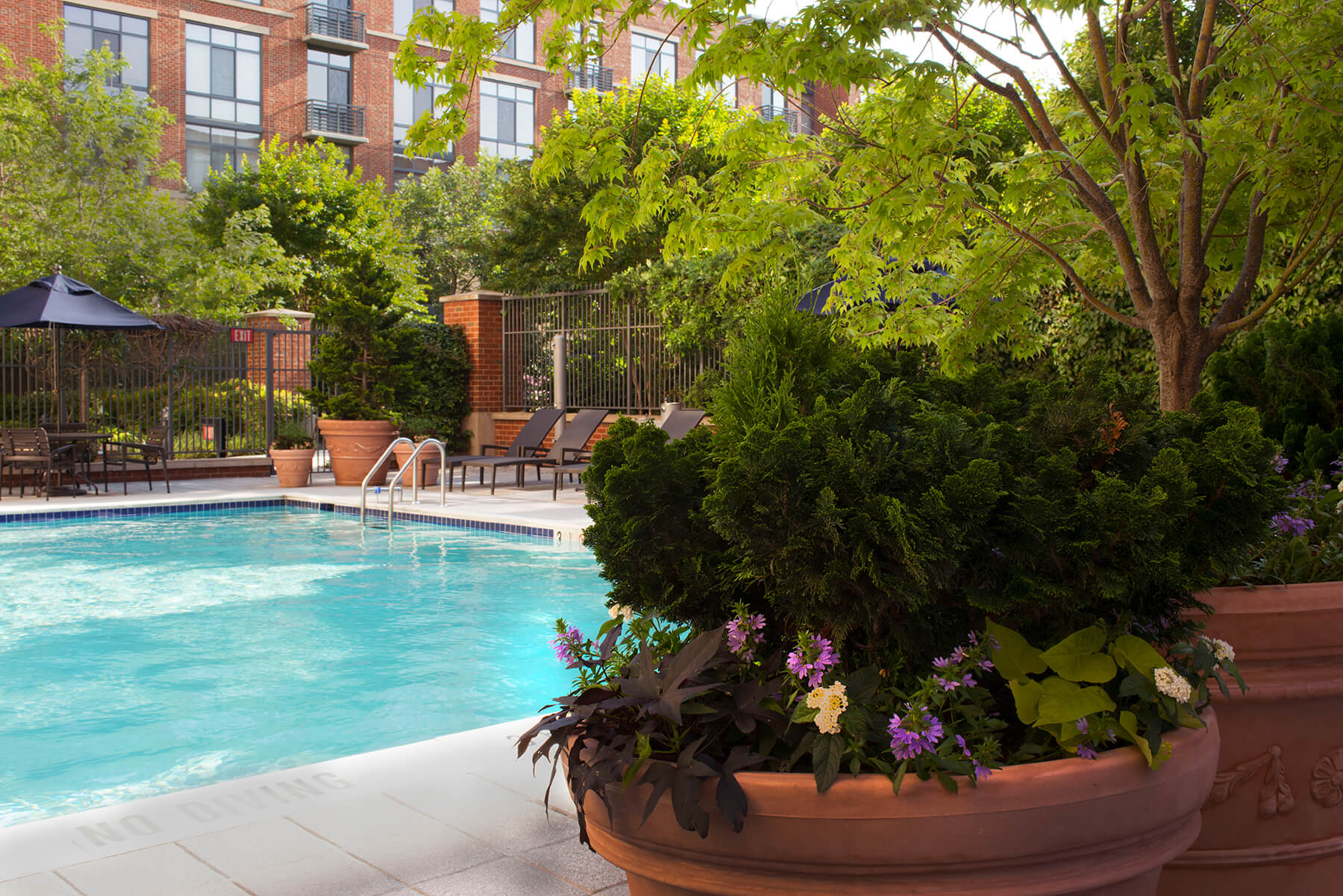Large planter pots make quite the statement when placed on sites with little to no space for landscaping. Implementing large containers with an assortment of overflowing flowers is eye-catching and can serve as a great focal point for your commercial site.
Believe it or not, there are rules to designing planter pots. You need to use flowers that look good in a pot (opposed to the ground), thrive under the same conditions, and have a tasteful color palette.Despite how great large planters look, plenty of things can go wrong. Here are some tips for creating the best planter pots on the block.
The right plant material for planter pots
There are a few things we keep in mind when choosing the right plant material for your pots. The most important aspect is environmental conditions; we use plants with the same water, soil, and sunlight requirements. Using plants that are cohesive will ensure a successful pot.
Space is another thing to consider. Plants will change shape as they grow. They will look very different a few months after they are installed. We don’t want your planter to look overcrowded, so we choose plants that won’t compete with one another.
Distinct Planter Pot Textures
We use lots of color and texture to make your planter stand out.
Color is huge when it comes to planters; the more, the better! Mixing bright and subtle colors, does an excellent job of attracting people’s attention. Instead of using different hues of one color, we add a variety of colors that work together.
There is a variety of flowers and leaves with textures that are waxy, shiny, fuzzy, or prickly. When we use multiple textures, you won’t have to worry about your plant material blending and looking too much alike.
The planter pot recipe: filler, spiller, and thriller
You will always have an exceptional planter when we use this simple three-ingredient recipe: filler, spiller, and thriller.
Fillers are good for adding mass to the overall composition of the planter, they also add a textural contrast or colorful counterpoint. Examples of filler plants include begonias, coleus, impatiens, Persian shield, plectranthus, heliotrope, and dusty miller.
Spillers are excellent for creating a “waterfall” effect. These plants cascade over the side of the container, softening its edges and giving a more natural look. Some great spillers are: alternantheras, bacopas, golden creeping Jenny, helichrysum, sweet potato vines, or callibrachoa.
Thrillers are the star of the pot; they are tall, drawl the most attention and are typically vertical (upright). These typically have the most outstanding qualities.We often start planter pots with the thriller in the center, and build around it. Examples of exceptional thrillers include: fuschsia, canna, purple fountain grass, taros, calla pennisetum, or phormium.
Self-Watering Planter Pots
Using self-watering planters give your plants a better chance of looking good all season long. They also dissolve issues related to moldy roots or plant disease. Self-watering planters reserve water at the bottom of them, allowing the roots to soak up water when needed. This is very helpful in the summer, when the heat index is high.

